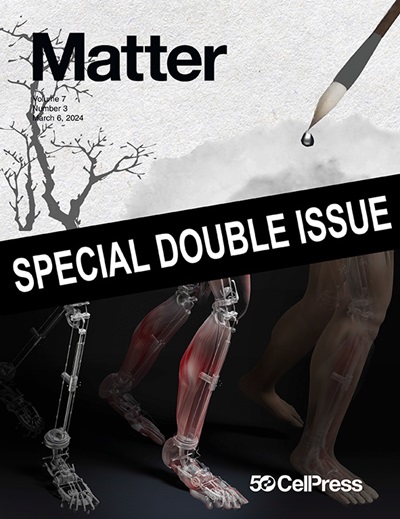Layer-by-layer mechanism of the MAX phase to MXene transformation
IF 17.3
1区 材料科学
Q1 MATERIALS SCIENCE, MULTIDISCIPLINARY
引用次数: 0
Abstract
MXenes are the fastest growing family of two-dimensional (2D) materials with potential for applications from energy storage to biomedicine, sensing, and electromagnetic shielding. Despite significant progress in MXene synthesis through selective etching of layered MAX phase precursors, limited understanding of the fundamental etching mechanism and kinetics hinders rational optimization of the process. Here, we monitored the etching process using in situ and ex situ techniques at the single-particle and ensemble levels. Our work shows that etching nucleation is instantaneous and etching occurs layer by layer. Through analytical modeling, we found that etching of V2AlC is diffusion-limited. In contrast, etching of Ti2AlC and Ti3AlC2 is reaction-interface-limited, with an additional surface reaction limitation for Ti3AlC2 accounting for more than one-quarter of the total etching time. Overall, our work provides significant insights into the MAX phase etching mechanism and kinetics and an overview of the tools and techniques available to investigate etchable layered materials.


MAX相向MXene相变的逐层机制
MXenes是增长最快的二维(2D)材料家族,具有从能量存储到生物医学,传感和电磁屏蔽的潜在应用。尽管通过层状MAX相前驱体的选择性蚀刻合成MXene取得了重大进展,但对基本蚀刻机制和动力学的了解有限,阻碍了该工艺的合理优化。在这里,我们使用原位和非原位技术在单粒子和系综水平上监测蚀刻过程。我们的工作表明,刻蚀成核是瞬时的,刻蚀是逐层发生的。通过分析模型,我们发现V2AlC的蚀刻是扩散受限的。相比之下,Ti2AlC和Ti3AlC2的蚀刻受到反应界面的限制,Ti3AlC2的附加表面反应限制占总蚀刻时间的四分之一以上。总的来说,我们的工作为MAX相蚀刻机制和动力学提供了重要的见解,并概述了可用于研究可蚀刻层状材料的工具和技术。
本文章由计算机程序翻译,如有差异,请以英文原文为准。
求助全文
约1分钟内获得全文
求助全文
来源期刊

Matter
MATERIALS SCIENCE, MULTIDISCIPLINARY-
CiteScore
26.30
自引率
2.60%
发文量
367
期刊介绍:
Matter, a monthly journal affiliated with Cell, spans the broad field of materials science from nano to macro levels,covering fundamentals to applications. Embracing groundbreaking technologies,it includes full-length research articles,reviews, perspectives,previews, opinions, personnel stories, and general editorial content.
Matter aims to be the primary resource for researchers in academia and industry, inspiring the next generation of materials scientists.
 求助内容:
求助内容: 应助结果提醒方式:
应助结果提醒方式:


